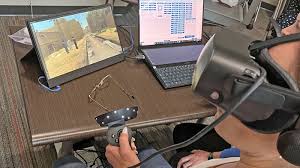
For decades, post-traumatic stress disorder (PTSD) has been one of the most difficult mental health conditions to treat. Traditional therapy often relies on talking through trauma or gradually re-exposing patients to triggering memories in safe environments. But now, an unexpected tool is offering new hope: virtual reality (VR). Once designed for gaming and entertainment, VR is being transformed into a powerful form of therapy that’s changing lives.
1. Why PTSD Is So Hard to Treat
PTSD occurs after experiencing or witnessing traumatic events such as war, accidents, or violence. Symptoms often include:
- Flashbacks that feel as real as the original trauma.
- Hypervigilance and constant anxiety.
- Avoidance of places, people, or situations that trigger memories.
Because trauma is deeply rooted in memory and the brain’s fear centers, treatment requires safely confronting those memories without overwhelming the patient.
2. How VR Therapy Works
Virtual reality therapy uses immersive headsets to place patients inside carefully controlled simulations. These virtual environments are tailored to match the source of trauma—for example, a soldier might relive combat scenarios, or a car crash survivor might experience virtual driving.
Unlike traditional talk therapy, VR provides:
- Controlled exposure – Therapists can adjust the intensity of triggers step by step.
- Safety – Patients know they are in a virtual space, reducing real-world risk.
- Engagement – The immersive experience makes therapy more realistic and impactful.
3. The Science Behind VR and the Brain
PTSD often causes the brain’s amygdala (fear center) to remain overactive, while the prefrontal cortex (logic center) struggles to calm it down. VR therapy helps “retrain” the brain by repeatedly confronting triggers in a safe, guided environment. Over time, this reduces the fear response and helps patients regain control.
4. Real-World Success Stories
- Veterans: Programs like Bravemind, developed at the University of Southern California, have shown major improvements in soldiers struggling with war trauma.
- First Responders: Firefighters and police officers are using VR to process high-stress experiences.
- Civilian Trauma Survivors: Car accident victims and survivors of natural disasters are also finding relief through tailored VR scenarios.
5. Beyond PTSD: Other Uses of VR in Mental Health
VR therapy is expanding beyond PTSD to treat:
- Phobias (fear of heights, flying, or public speaking).
- Addiction recovery by simulating high-risk environments and teaching coping skills.
- Anxiety disorders through mindfulness and relaxation simulations.
6. The Future of VR Therapy
As VR technology becomes cheaper and more accessible, therapy could eventually be done from home, guided by clinicians remotely. Pairing VR with AI-powered customization may create highly personalized treatment, making therapy more effective than ever.
Final Thoughts
Virtual reality is proving that healing doesn’t always require traditional methods. By blending technology with psychology, VR therapy is giving PTSD sufferers a new path to recovery—one where they can face their fears, rewrite their responses, and reclaim their lives.